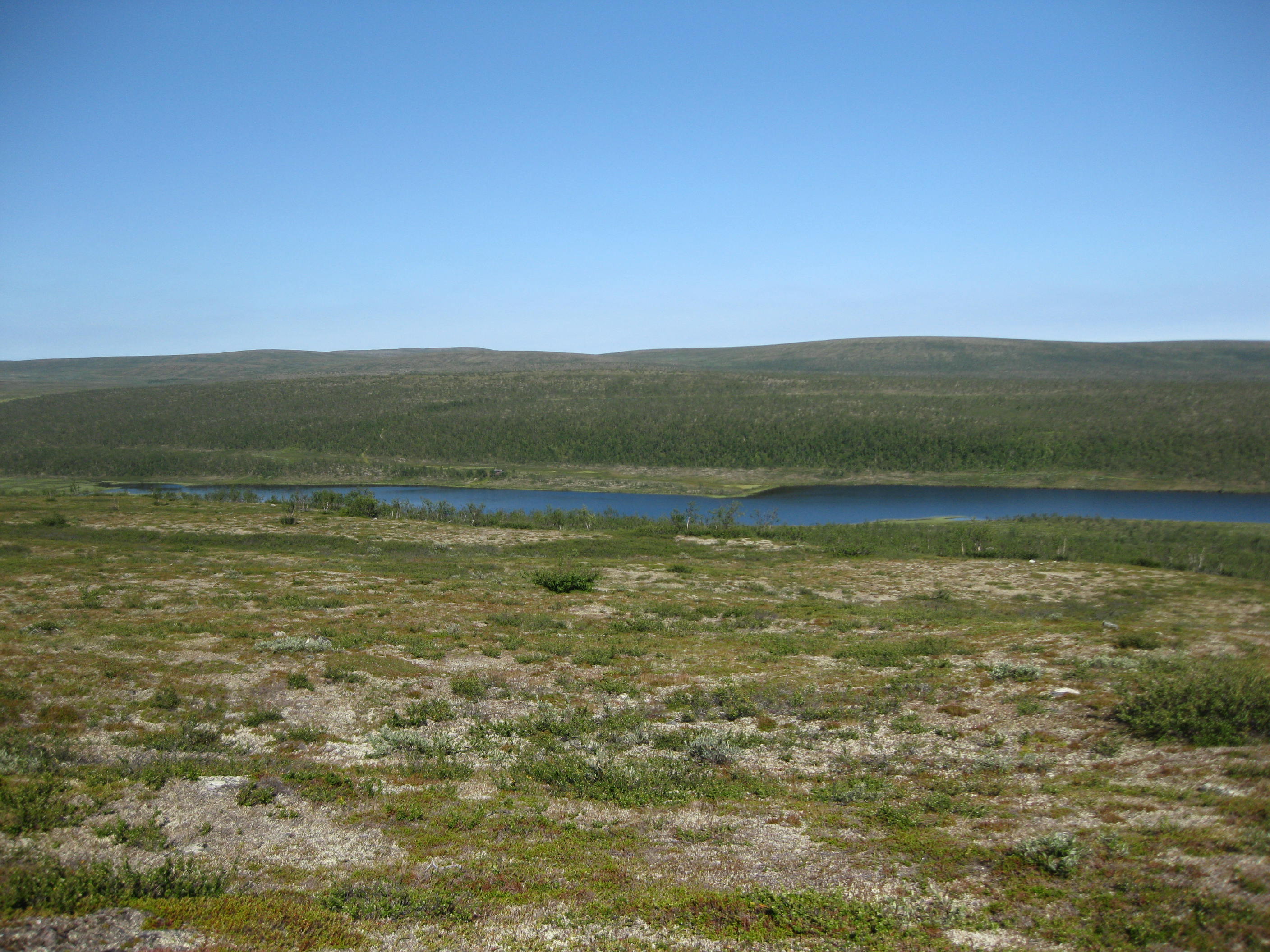
On Land and Lakes: Colonizing the North
The Sámi, having lived in the Arctic regions of Scandinavia for millennia, have cultivated ritualized fishing and lake-caring techniques that maintain a reciprocal relationship with their aqueous environment. But over the years, these practices of relation have been threatened by the encroachment of industry, climate change, and even environmental restrictions. The social scientists Liv Østmo and John Law explain how this complicates the ontology of an entire region.
Land and water in Sápmi
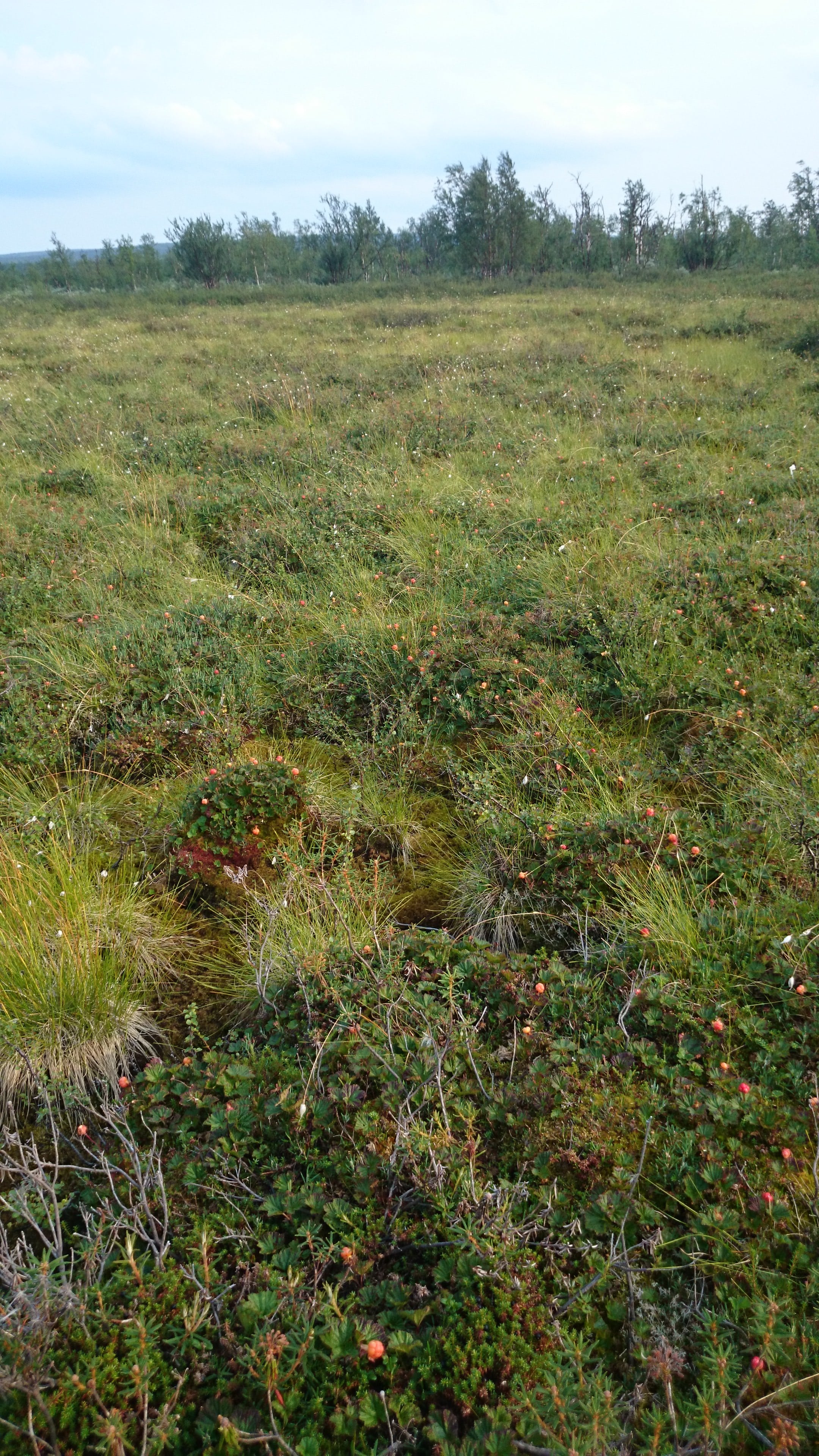
large
align-left
align-right
delete
The land stretches out, gently rising and falling into the distance. It’s covered with willow and dwarf birch and grass and moss and lichen and outcrops of rock as far as the eye can see. Summer birds call, there are ducks on the lake, and there are clouds of mosquitoes. If you walk and you know where to look, you will find bilberries and cloudberries, and mushrooms too. We are in the north of Norway in Finnmark, on the high plateau with its subarctic tundra. We are also in Sápmi, the land of the Sámi people. A gentle breeze is rippling the surface of the lake. And on the edge of the lake a small group of people are getting ready to fish. They have a boat, a long seine net, and ropes. Once they are fishing, the net will set like a semi-circular curtain. It will pass through the water sweeping up any fish in its path. As it moves forward, the fish will concentrate in the center and then get swept up into a bag, also made from netting, in the middle of the net.
Seine fishing is a skillful job. Here in Sápmi you need to choose the right place to fish. You need to choose the right time to fish. And the right time of year. You need to know how much to fish, also where not to fish. You need to know when things don’t look right, so you know when not to fish. You need to keep the nets, the floats, and the weights in good order, and make sure they are there by the lake when you need them.
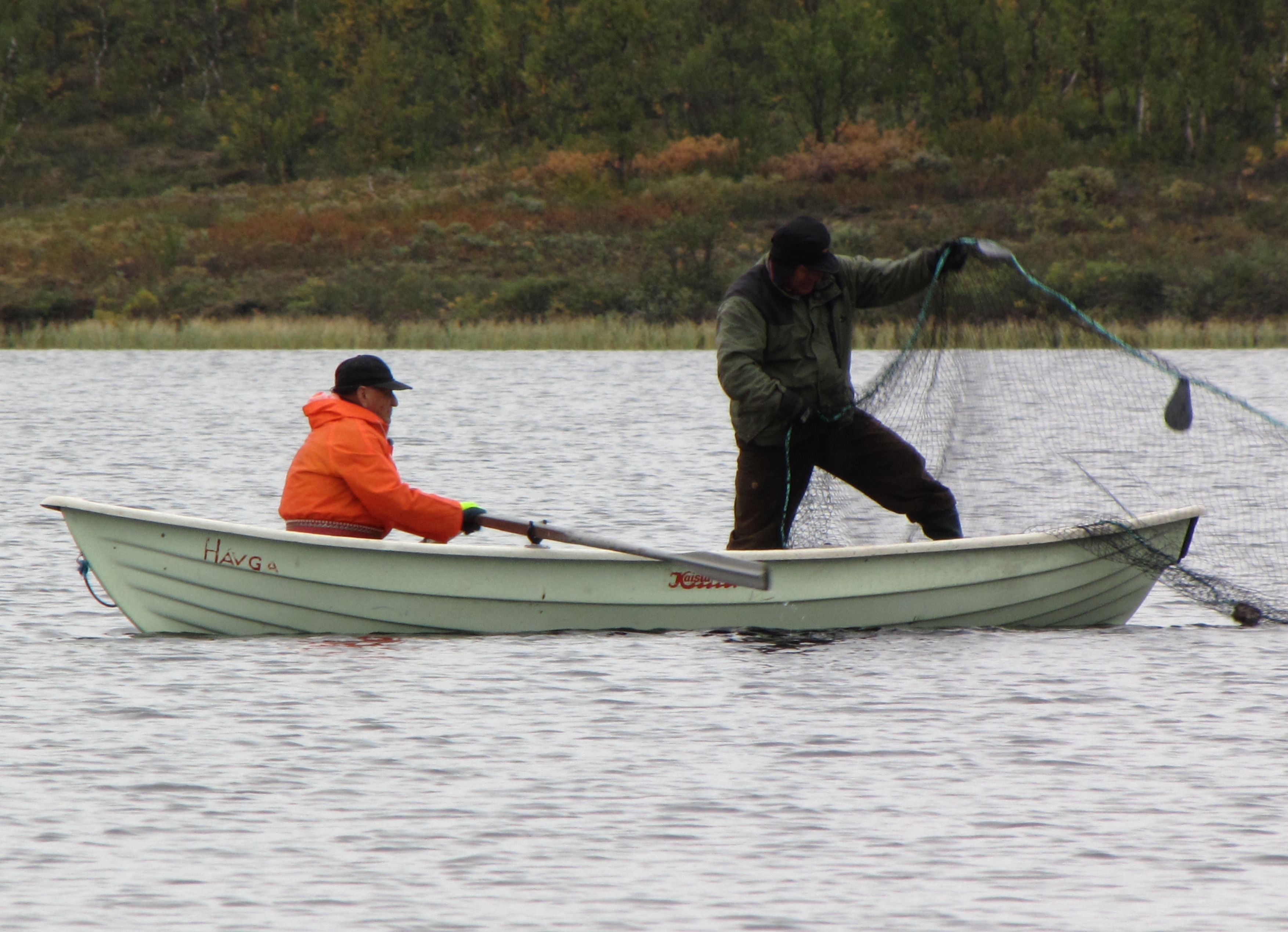
large
align-left
align-right
delete
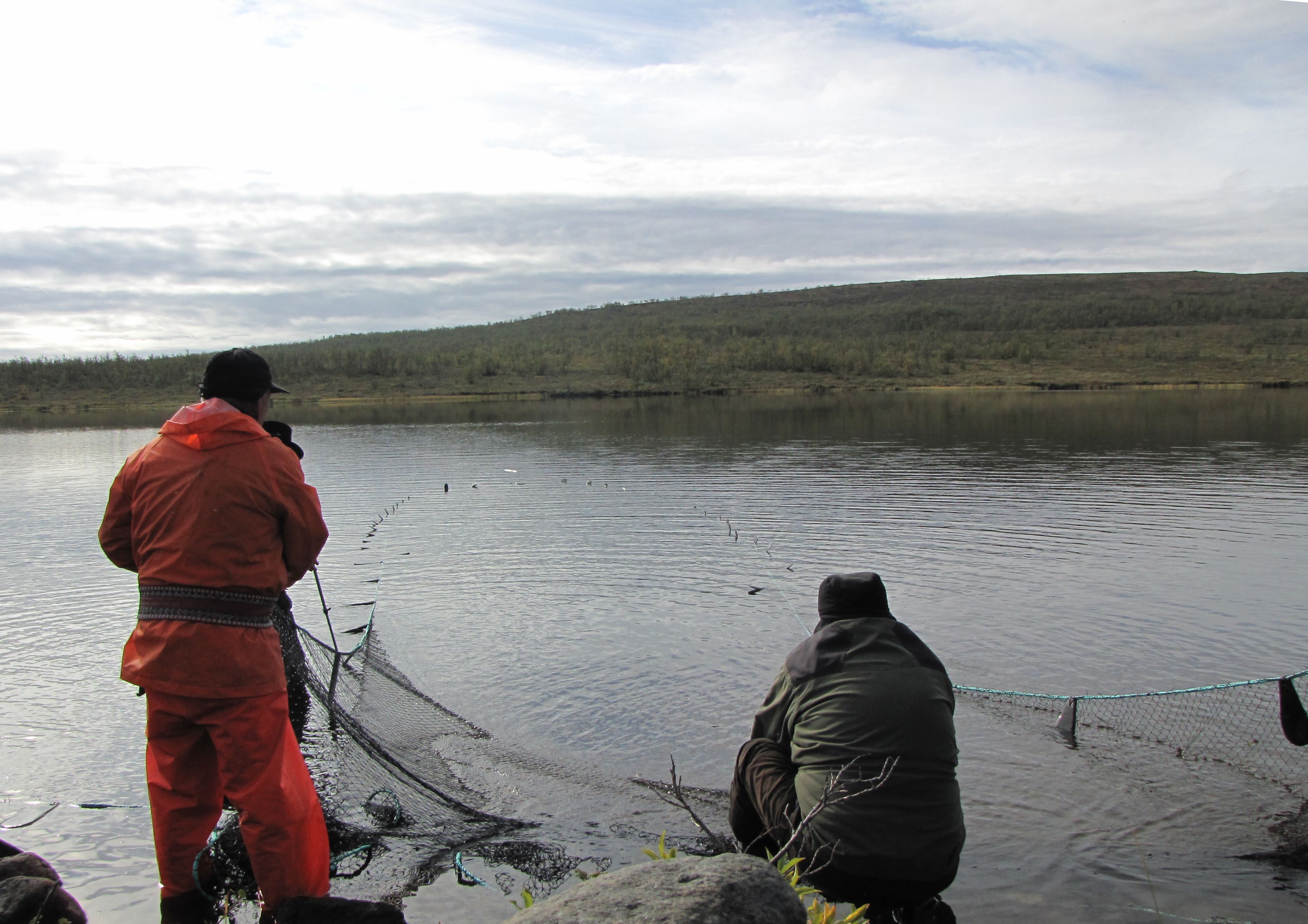
large
align-left
align-right
delete
And when you actually start to fish you need to make sure that the net doesn’t get tangled up when you are paying it out. You need to row the boat slowly in a wide arc so the net gets set right. You need to keep the net moving when you are hauling it in, so that the floats splash and scare the fish so they don’t escape. You need to pull both ends of the net in, at the same rate, because if you don’t the fish won’t end up in the bag. When you finally haul the net to shore, you need to close the neck of the bag quickly to stop the fish getting away. Then you also need to speak to the lake, to ask it to give you fish. You may need to make it offerings. You need to look after the lake, to keep it healthy, by clearing it of debris and rooting out sedge. You need to bless the lake even if you didn’t catch any fish. And you need to return the bones of the fish that you have eaten to the roots of a birch tree.
Inger Anne O. Hætta and Isak M. Hætta have been fishing for a lifetime: they are traditional knowledge holders.This account of fishing draws in part from Liv Østmo, Nuohttegeassin, Traditional Knowledge of Shore Seine Fishing, 2011. Video, 28 min. 18 sec., in Sámi with English subtitles, with Inger Anne O. Hætta and Isak M. Hætta. Árbediehtu Pilot project, Sámi Allaskuva (Sami University of Applied Sciences), Guovdageaidnu/Kautokeino, Norway also available online <https://www.youtube.com/watch?v=YATDMoU4Yoo>. We particularly wish to thank the traditional knowledge holders Isak M. Hætta and Inger Anne O. Hætta for their gracious participation in the Árbediehtu project. Inger Anne explains that she started fishing with her father when her mother was carrying her second child. Though she was just a young girl she was needed because it takes at least two people, really three, to handle the net.

large
align-left
align-right
delete
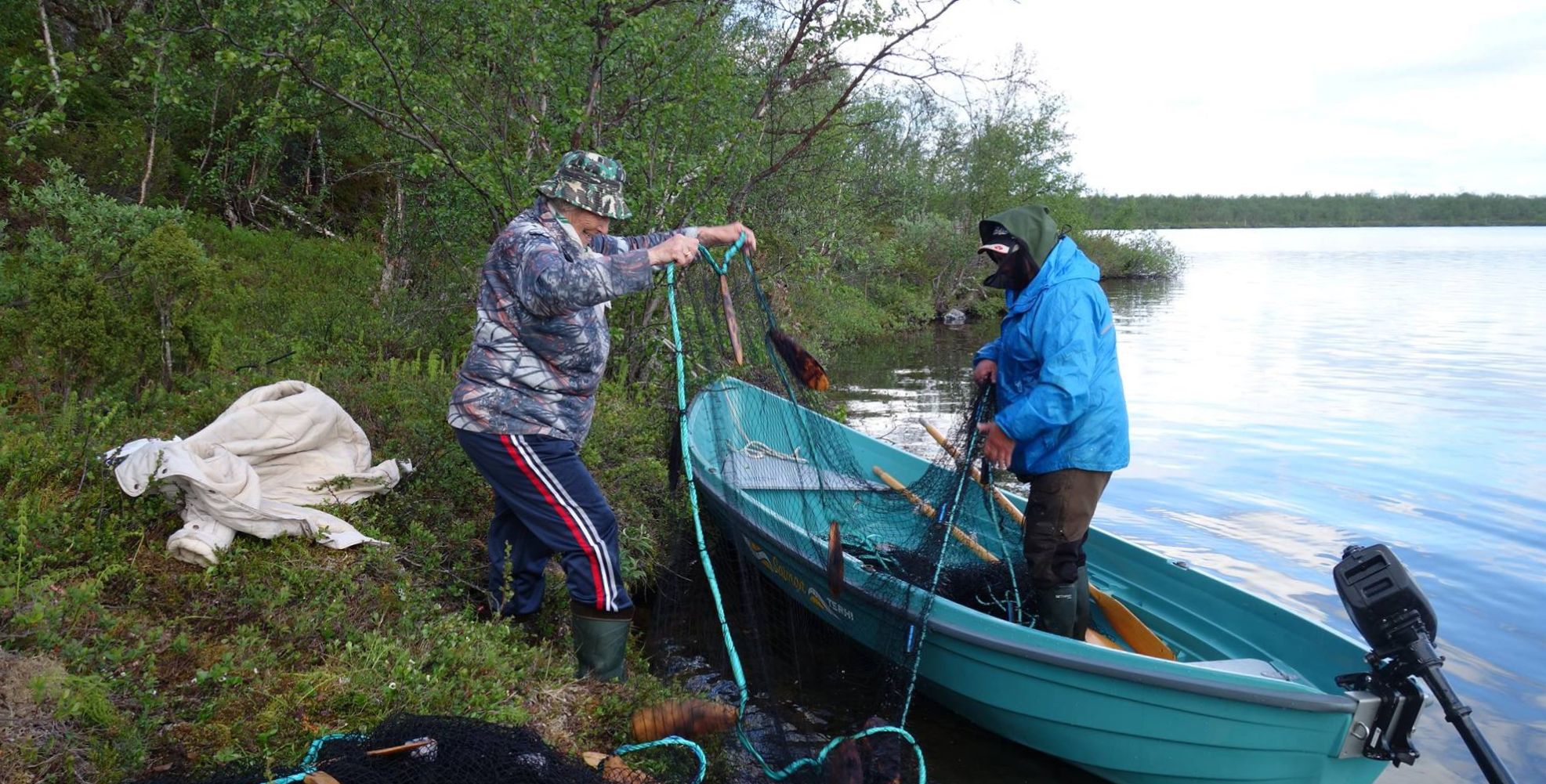
large
align-left
align-right
delete
She and Isak are looking at the floats. Made of weathered wood, they say that these floats are old. Indeed, some have names and dates scratched onto them. The markings are not so legible, but it becomes clear that there are family names here. One reads “Inga Klemetsdatter Hætta, 1924,” and a second “Isak Mikkelsen Hætta, 1916.” The floats confirm that this lake has been fished for generations. They also tell us that it has been fished by people from the same extended family for at least a hundred years. And ‒ this is important ‒ in addition they tell us that the relations between the lakes in Sápmi and the people who fish on them go back a very long way.
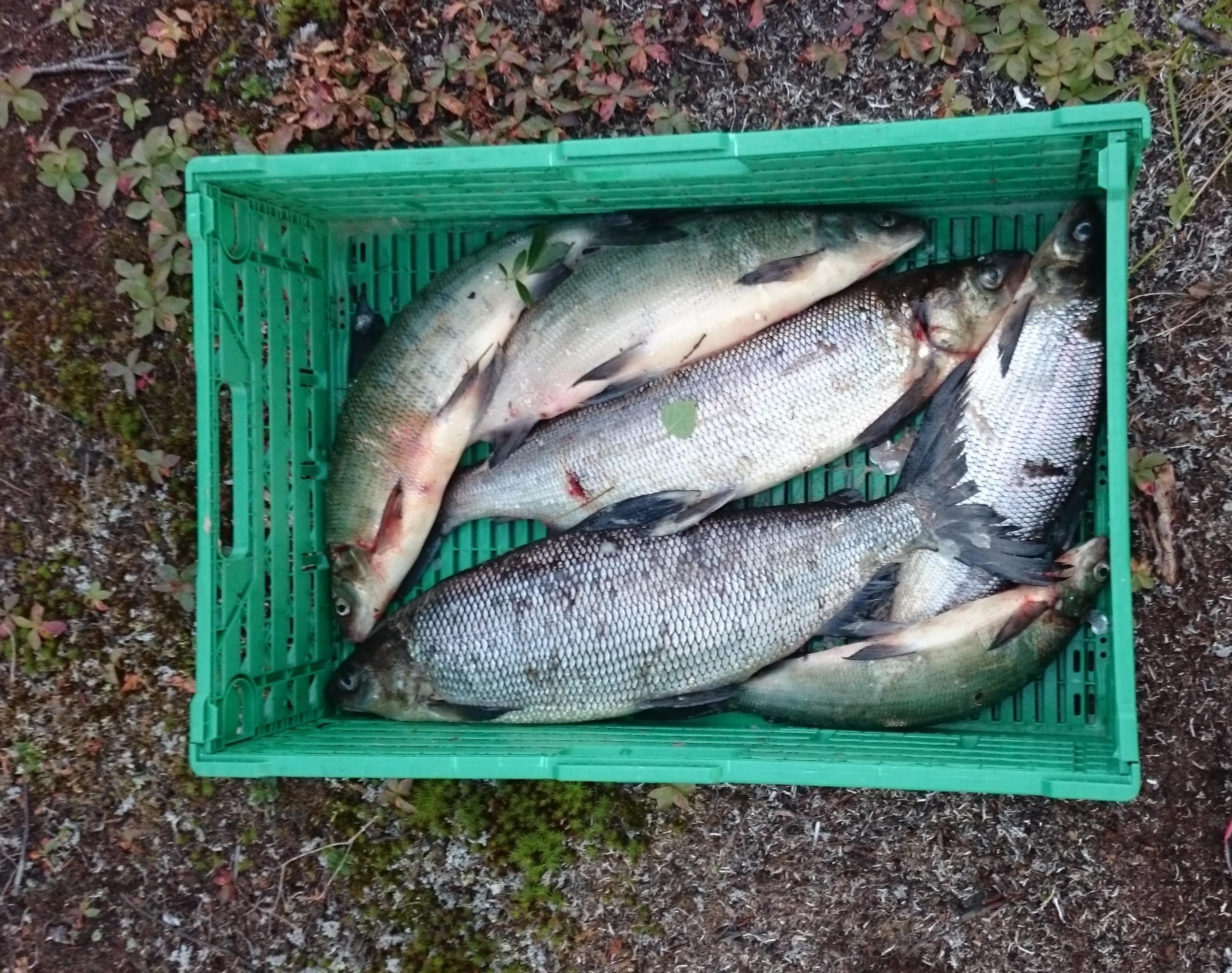
large
align-left
align-right
delete
Life has changed since the 1960s when the first roads came to the plateau. The 1960s is also when snowmobiles and quad bikes arrived. Before then, there was less physical mobility. Though the tradition continues, it was clearer that particular family groups fished in – and cared for – particular lakes. Outsiders couldn’t easily travel. And the fishing routines were different too. Thus, even if you knew the land well it was difficult to move across the plateau after the thaw, so you took everything you needed for fishing to the lake in winter, skiing and using reindeer-drawn sleds. The boat, the nets, the salt that you used to preserve fish and the half-barrels that you stored them in, you brought all these to the lake while everything was still frozen. And after you had fished in the summer you waited for the freeze to come again before you shipped the barrels of salted fish off to be eaten, sold, or bartered. Because the salt fish from the lakes – in English the fish is called powan – was not only crucial for subsistence, though indeed it was. It was also of considerable economic importance. Merchants have been buying or bartering salted powan for salt and coffee and sugar and other staples for at least two centuries. Even away from the coastline, Sámi people have been in the webs of trade for a very long time.Lars Ivar Hansen, “Sami Fisheries in the Pre-modern Era: Household Sustenance and Market Relations,” Acta Borealia, vol. 23, no. 1 (2006), pp. 56‒80, also online <http://dx.doi.org/10.1080/08003830600789390>.
A colonial context
But then they have been caught up in the webs of politics too, as a changing medley of nations from the south (currently Norway, Sweden, Russia, and Finland) have pursued their national and colonial projects by settling, extracting, trading, and defining their territorial boundaries in ways that usually made no sense to those already living there. These projects were often directly or indirectly repressive. Sámi society – and especially reindeer-herding society – was torn in profound ways when the border between Finland (then Russia) and Norway was closed in 1852, and again in 1888 when the Swedish authorities closed the frontier to reindeer herding. Sometimes, and especially in the nineteenth and early to mid-twentieth century, the motives of the authorities were unashamedly racist: Sámi were simply inferior. Anthropologists collected and measured skulls, while in many places – though not on the plateau – it became shaming to speak Sámi, and the language was lost. Farming practices better adapted to southern Norway were imported to the subarctic and imposed, and many Sámi were obliged to settle in villages. And there were sustained pressures on land use, pressures that are still powerfully at work. In particular, there has been – and there still is – large-scale commercial extraction of minerals, oil, and fish, together with extensive quarrying. There have been hydroelectric projects and webs of power lines have been built. And now land is being increasingly absorbed by tourism, while the designation of large areas as wilderness or as national parks has also continued to squeeze Sámi ways of living.We cannot explore this centuries-long conflict here, but for aspects of this, see: Harald Eidheim, “When ethnic Identiy is a Social Stigma,” in Fredrik Barth (ed.), Ethnic Groups and Boundaries: The Social Organization of Cultural Difference. Oslo: Universitetsforlaget, 1969, pp. 39‒57; Nils Oskal, “Political Inclusion of the Saami as Indigenous People in Norway,” International Journal on Minority and Group Rights, vol. 8, nos 2‒3 (2001), pp. 235‒62; Henry Minde, “Assimilation of the Sami – Implementation and Consequences,” Acta Borealia, vol. 20, no. 2 (2003), pp. 121‒46, also online <http://dx.doi.org/10.1080/08003830310002877>; Chad M. Briggs, “Science, local knowledge and exclusionary practices: Lessons from the Alta Dam case,” Norsk Geografisk Tidsskrift ‒ Norwegian Journal of Geography, vol. 60, no. 2 (2006), pp. 149‒60, also online <http://dx.doi.org/10.1080/00291950600723146>; Vuokko Hirvonen, “Sámeeatnama jinet ‒ sápmelaš nissona bálggis girječállin,” PhD thesis, Oulu University, 1998; published in Northern Sámi; English translation, Voices from Sápmi: Sámi Women’s Path to Authorship. Kautokeino: Hirvonen, 2008; Inger Marie Gaup Eira et al., “Sápmi: Kautokeino, Norway and Inari, Finland,” in Anders Oskal et al. (eds), EALÁT Reindeer Herders’ Voice: Reindeer herding, traditional knowledge and adaptation to climate change and loss of grazing land. Kautokeino: International Centre for Reindeer Husbandry, 2009, p. 31; Siv Ellen Kraft, “The making of a sacred mountain: Meanings of nature and sacredness in Sápmi and northern Norway,” Religion, vol. 40, no. 1 (2010), pp. 53‒61, also online <http://www.sciencedirect.com/science/article/pii/S0048721X09001146>; Mikkel Nils Sara, “Land Usage and Siida Autonomy,” Arctic Review on Law and Politics, vol. 3, no. 2 (2011), pp. 138‒58; Svein D. Mathiesen et al., “Strategies to enhance the resilience of Sámi reindeer husbandry to rapid changes in the Arctic,” in Arctic Council (ed.), Arctic Resilience Interim Report 2013. Stockholm: Stockholm Environment Institute and Stockholm Resilience Centre, 2013, pp. 109–12; Susann Funderud Skogvang, “Legal Questions Regarding Mineral Exploration and Exploitation in Indigenous Areas,” Michigan State International Law Review, vol 22, no. 1 (2013), pp. 321‒45; Hugo Reinert, “Weight, Density and Space in the Norwegian Reindeer Crisis — Notes Towards a Critique,” Valuation Studies, vol. 2, no. 2 (2014), pp. 153‒83; Kathrine Ivsett Johnsen et al., “Seeing like the state or like pastoralists? Conflicting narratives on the governance of Sámi reindeer husbandry in Finnmark, Norway,” Norsk Geografisk Tidsskrift ‒ Norwegian Journal of Geography, vol. 69, no. 4 (2015), pp. 230‒41, here p. 232, also online <http://dx.doi.org/10.1080/00291951.2015.1033747>; Solveig Joks and John Law, “Sámi Salmon, State Salmon: LEK, Technoscience and Care, Sociological Review Monograph,” in Vicky Singleton et al., Care and Policy Practices: Translations, Assemblages, Interventions. Chichester: Hobeken, NJ: Wiley-Blackwell, 2017 (in the press), also online <http://www.heterogeneities.net/publications/JoksLaw2016SamiSalmonScienceSalmon.pdf>.
Though these pressures persist, there have also been recent changes for the better. Between 1979 and 1982, Sámi political identity was crystallized by a hydroelectric proposal to submerge a large Sámi village.Briggs, “Science, local knowledge and exclusionary practices.” After much struggle the result was the establishment of a Sámi parliament in 1989, and the Norwegian recognition of the Sámi as an indigenous people in 1990. Johnsen et al., “Seeing like the state or like pastoralists?,” p. 230. Along the way, education in Sámi, banned since 1898, became possible. More recently, and more directly relevant to our story of land and water, in 2005, the land title for 95 percent of Finnmark was vested in the Finnmark Estate, FeFo (Finnmarkseiendommen/Finnmarkkuopmodat). FeFo, an autonomous body with partial Sámi membership, has the power and the obligation to investigate traditional uses of land, and (though this works controversially) to establish usufruct where this is appropriate.Else Grete Broderstad, “Implementing Indigenous Self-Determination: the Case of Sámi in Norway,” in Marc Woons and Ku Leuven (eds), Restoring Indigenous Self-Determination: Theoretical and Practical Approaches. Global: E-International Relations, 2014, pp. 80‒87, also online <http://www.e-ir.info/wp-content/uploads/2014/05/Restoring-Indigenous-Self-Determination-E-IR.pdf>. Such is the colonial context we require if we are to think well about fishing in lakes in Sápmi. About land and water.
Relations with the lake
Sámi people such as Inger Anne O. Hætta and Isak M. Hætta not only go fishing, but they also care for the lakes in which they fish. Thus, for instance, you never take more fish than you need. That is one rule of thumb. A second is that if all the fish are the same size, then you stop fishing, because this shows that the fish in the lake are not reproducing. A third is that you don’t try to catch fish when they are carrying roe near their spawning beds. Of course, if you are to avoid doing this you also need to know the location of their spawning beds, so you need to know your lake. You need, like the Hætta family, to be in a continuing relation with it – something that has become more difficult in the mobile post-1960s era of snowmobiles and quad bikes.
The continuity in the relations between people and lakes reveals itself in other ways. We said, for instance, that Sámi fishing people clear out debris. They do this because over the course of a year leaves fall and branches are blown into the lake. Logs and trees are washed down and come to rest where the rivers flow into the lake. Or they float to the outlet and start to dam it. And then the Sámi fishing people clear out sedge, since if this is left to its own devices, it quickly spreads in areas of stagnant water, and then the water flows even less well. If you ask traditional knowledge holders, they will tell you that this makes the lake unhealthy, because if the water is stagnant then the best fish – the powan – begin to suffer while the pike multiply.
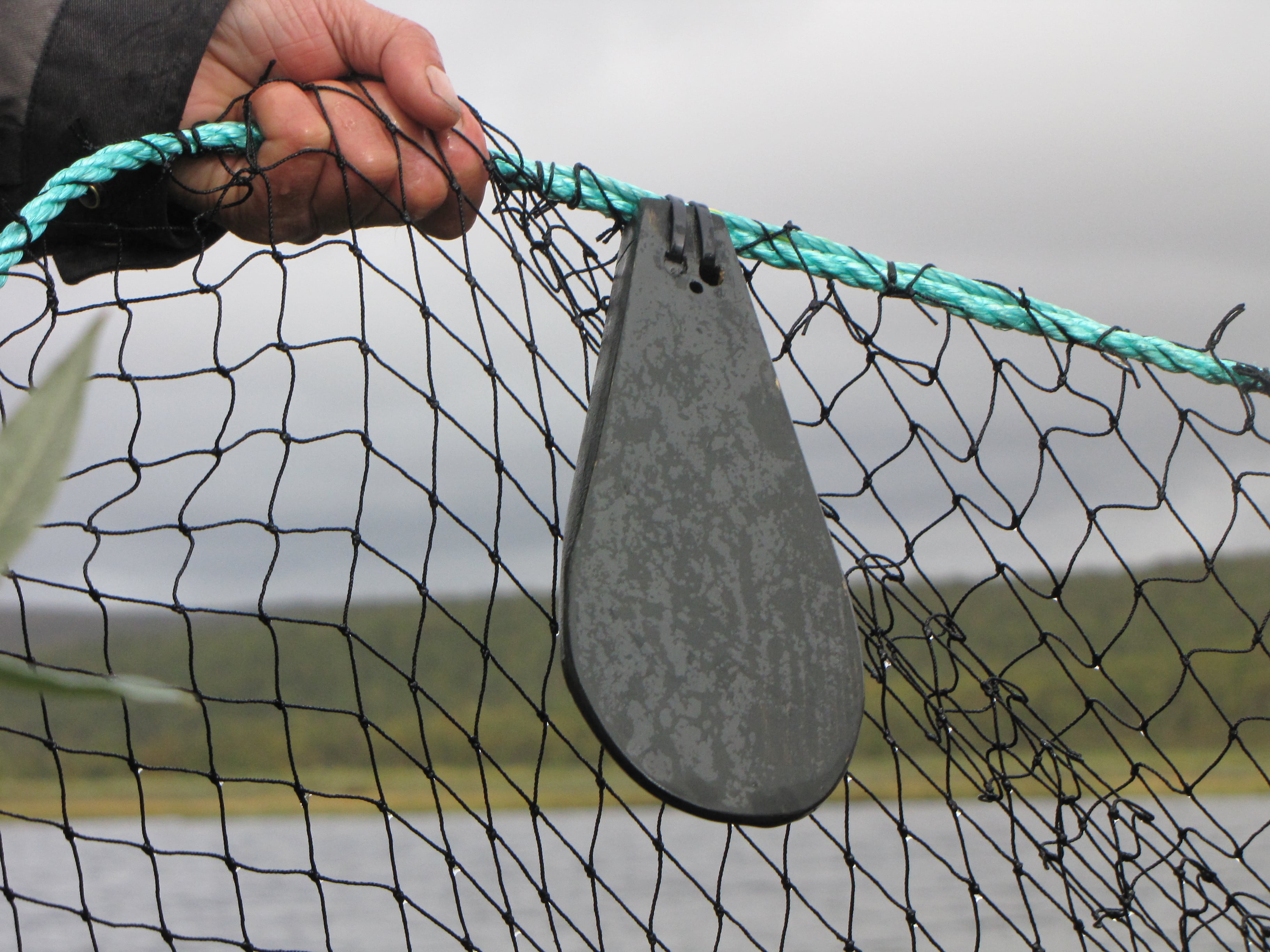
large
align-left
align-right
delete
Some pike in a lake are okay, but too many are not desirable, in part because they bring parasites with them. So, a stagnant lake, one that is blocked, is one in which there are fewer powan; and those that are in there are poorer in quality. All of this means that those who customarily fish in a lake also try to care for that lake. As we have just said, they clear away debris and use long forked branches to twist and uproot the sedge. (Merely cutting this does not help, it just grows back.) But, also important, fishing with a seine net improves the quality of the lake. This is because the weights on the bottom of the net drag along the bed of the lake and stir it up. The slimy layer of rotting vegetation gets churned up so sedge does not get established. At the same time, the insect life at the bottom of the lake also gets mixed into the water. The traditional knowledge holders say that this is why the fishing is better if you go back to the same place next day.
So caring for the lake makes for a healthy lake. But caring is multivalent and it ramifies in ways that do not necessarily make sense to outsiders. Indeed, in ways that are not necessarily visible to outsiders. For instance, as we briefly noted above, fishing people will ask the lake to give up fish before they start fishing. They will thank the lake and bless it once they have fished. Indeed, they will bless it even if they caught no fish – the reasoning being that, after all, there are fish in the lake and they will be coming back to fish another day. And, we mentioned this too, they will also return the bones of the fish they have eaten to the ground near the lake. All of these are expressions of respect. The importance of respect becomes visible, too, in a Sámi story about fishing. This tells of a man and a boy who went to a lake to fish, and were blessed with extraordinary success. They salted the fish, and melted the fat – a good powan is a fat fish – in a pan over the fire. But the boy was puzzled. The oil in the pan kept on disappearing. After a couple of days, he decided to find out why. And what he found was that after they went to bed the fisherman got up, took the oil, walked out of the camp, and poured it over a stone. The boy said nothing, but in the morning, he walked to the stone, and threw it in the lake. Then their fishing luck changed, they caught nothing, and they went on catching nothing. Until, after several days, they caught a reindeer heart, which they cooked and ate. Then a reindeer came close and they killed it, only to find that when they butchered it, it didn’t have a heart. The boy thought, this is strange, but the fisherman said that it wasn’t odd at all: after all, they had already eaten the heart. At which point the boy got frightened and ran off home.
This is a story about respect. But it is a story that makes best sense if you know that the stone was a sieidi. A sieidi is a place, often a stone, which is also a place of offering. Sometimes a place of worship, a sieidi is always a place where offerings are made with the objective of maintaining reciprocity. It is somewhere you treat respectfully even if it is not your own sieidi.On sieidi see Nils Oskal, “On nature and reindeer luck,” Rangfer, vol. 20, nos 2‒3 (2000), pp. 175‒80, here p. 179; Tiina Äikäs, “Archaeology of sieidi stones: Excavating sacred places,” in Jose-Maria Mallarach et al. (eds), The Diversity of Sacred Lands in Europe: Proceedings of the Third Workshop of the Delos Initiative. Gland, Switzerland: International Union for Conservation of Nature, 2012, pp. 47‒57, here p. 49; also online <https://www.researchgate.net/profile/Josep_Maria_Mallarach/publication/271851529_The_Diversity_of_Sacred_Lands_in_Europe._Proceedings_of_the_Third_Workshop_of_the_Delos_Initiative_-_Inari__Aanaar_2010/links/54d507400cf25013d02a5f1e.pdf - page=38>; and Jelena Porsanger, “Indigenous Sámi religion: General considerations about relationships,” in Jose-Maria Mallarach et al. (eds), The Diversity of Sacred Lands in Europe: Proceedings of the Third Workshop of the Delos Initiative. Gland, Switzerland: International Union for Conservation of Nature, 2012, pp. 37‒45, here p. 41, also available online as in the previous reference. That explains why the fishing went wrong when the boy threw the sieidi in the lake. The moral of the story has thus to do with both respect and reciprocity. We are being told that, that which is taken is also given. Or, perhaps better, that taking is impossible without giving. The reindeer gave its heart. And the lake gave its fish until its relation with the man and the boy was ruptured by the action of the boy. Respect, reciprocity, and care, here all three are woven together. And so too is fear, or at least a sense of the limits of human power. For on the subarctic plateau the forces at work deserve respect. They are powerful actors in their own right. The weather. Or the lake. Or the moon.
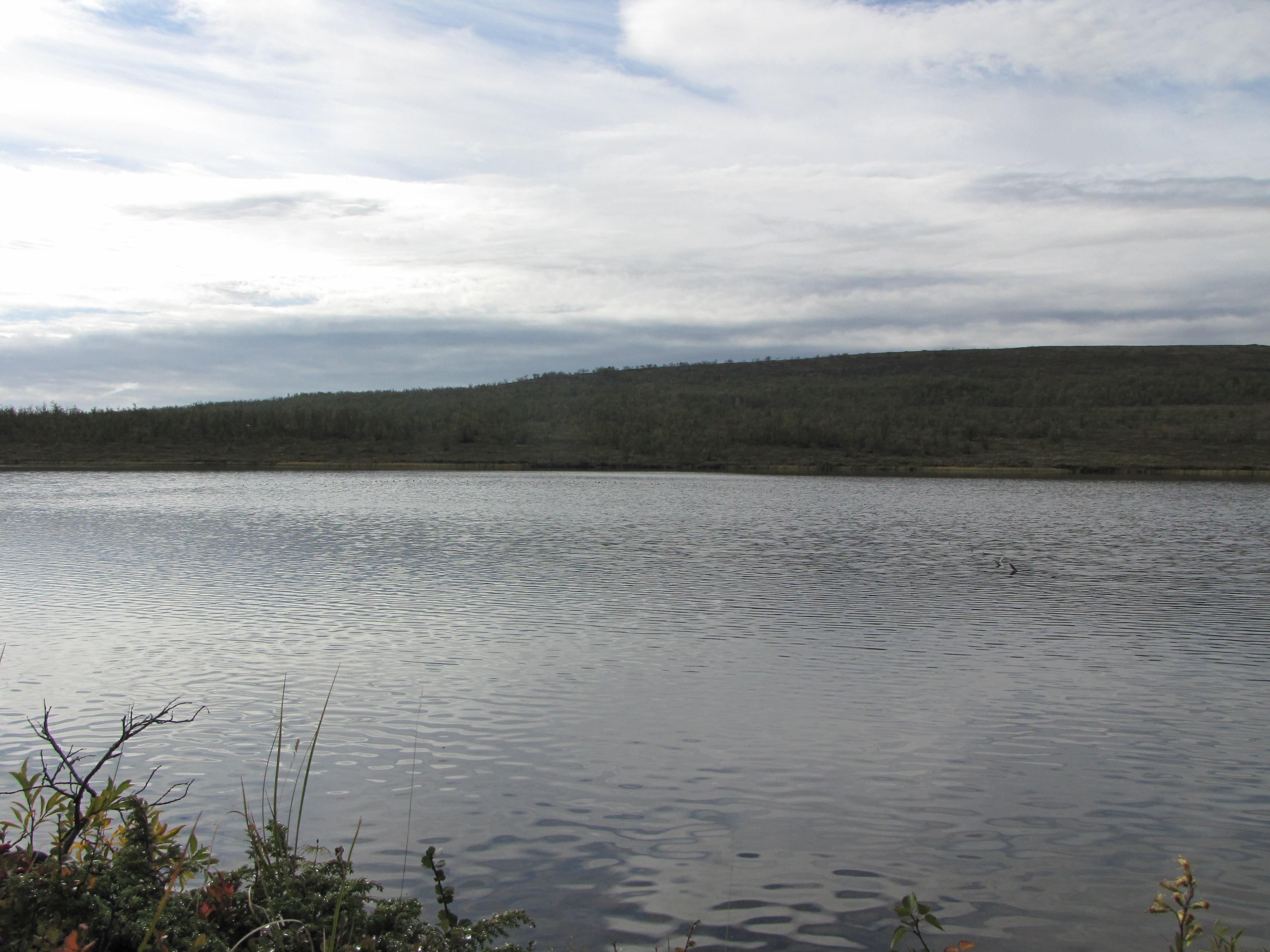
large
align-left
align-right
delete
BerkesFikret Berkes, Sacred Ecology. Abingdon: Routledge, 2012, p. 40. observes that “[t]he idea of an environment that is actually controllable by humans is a uniquely modernist concept.” Exactly so. But respectful long-term relations are possible, desirable, and indeed necessary. That is how this world works. People are caught up in and nurture relations of reciprocity with other powerful actors. Prediction is not possible. This time your net may be empty, but next time, or the time after, there will be fish again.
Nature and culture?
But this tells us something else. This is that people and the other actors in this world are not so very different from one another. Indeed, in many respects they act in more or less the same way. Think again about lake care. As we have seen, fishing people clear the debris from the lake. But they don’t always have to do this because often the spring melt does it for them. To understand this you need to know that on the plateau the spring melt can be quite dramatic. In a very short period, a day or two, the ice that has been blocking the rivers over the winter breaks up and the melt – a mixture of ice and water – forces its way downstream. The power accumulated over the winter is released and the melt pushes branches, logs, and trees before it. It may add to the debris in the lake, but it may also scour the debris out. If this happens then people such as Inger Anne and Isak don’t have to do it themselves. But for our purposes, what is most important is the way that the traditional knowledge holders talk about this. For when they need to clear the debris themselves, they say that they are simply doing the work of the melt. We said this a moment ago. In this world, for certain purposes people and the weather are not so very different. Or people and the lake. In this world all of these are actors, all are lively actors, all deserve respect, and that respect takes the form of long-term and reciprocal relations. That is what it is, this world, a web of unpredictable but respectful encounters.Nuccio Mazzullo and Tim Ingold, “Being Along: Place, Time and Movement among Sámi People,” in Jørgen Ole Bærenholdt and Brynhild Granås (eds), Mobility and Place: Enacting Northern European Peripheries. Aldershot and Burlington, VT: Ashgate, 2008, pp. 27‒38. It is a world in which a binary distinction between nature and culture makes no sense.
But there are snags. The first of these comes in the form of climate change. In the subarctic, its consequences are becoming obvious. First, the winters are not as cold as they were and the permafrost is slowly melting. This means that more water is being absorbed into the ground rather than melting and running off in the spring. And then second, more often than in the past, the melt is in any case happening little by little. The result is that the spring melt – if it happens at all – is less dramatic than it was. The consequence is that the lakes are not being scoured of debris to the same extent as in the past. Which makes for more work for people such as Inger Anne and Isak.
But this leads to the second snag. This is that the laws are changing. The Norwegian state and its agencies have become ever more concerned about protecting nature. The result is that it is no longer easy – indeed, in some instances it is no longer possible – for Sámi people to care well for the lakes in which they fish. These laws work against this both directly and indirectly. For instance, it is no longer legal to clear away driftwood. The reasoning is that in the wilderness it is wrong to interfere with the workings of nature. Such is an example of a direct prohibition. But there are also many indirect rules that also impact lake care. You need a permit to fish. You can only fish between certain dates and in certain places. You can’t use off-road vehicles after the spring thaw until July 1st. Exceptions aside, you can only use off-road vehicles on stipulated trails. The rationale for all these rules is the same: nature is in need of protection from human activity. But they all work to make caring for the lakes more difficult. So, and to state the obvious, if you can’t get to a lake then you can’t look after it. And, less obviously, if you are barred from using off-road vehicles until July 1st then it gets more difficult to clear the sedge early in the growing season when it is much more easily uprooted. And the rules are not idle: thinly populated though the plateau is, both the Statens Naturoppsyn (the Norwegian Nature Inspectorate) and the Reinpolitiet (the Reindeer Police) are there and they seek to enforce those rules.
Conclusion
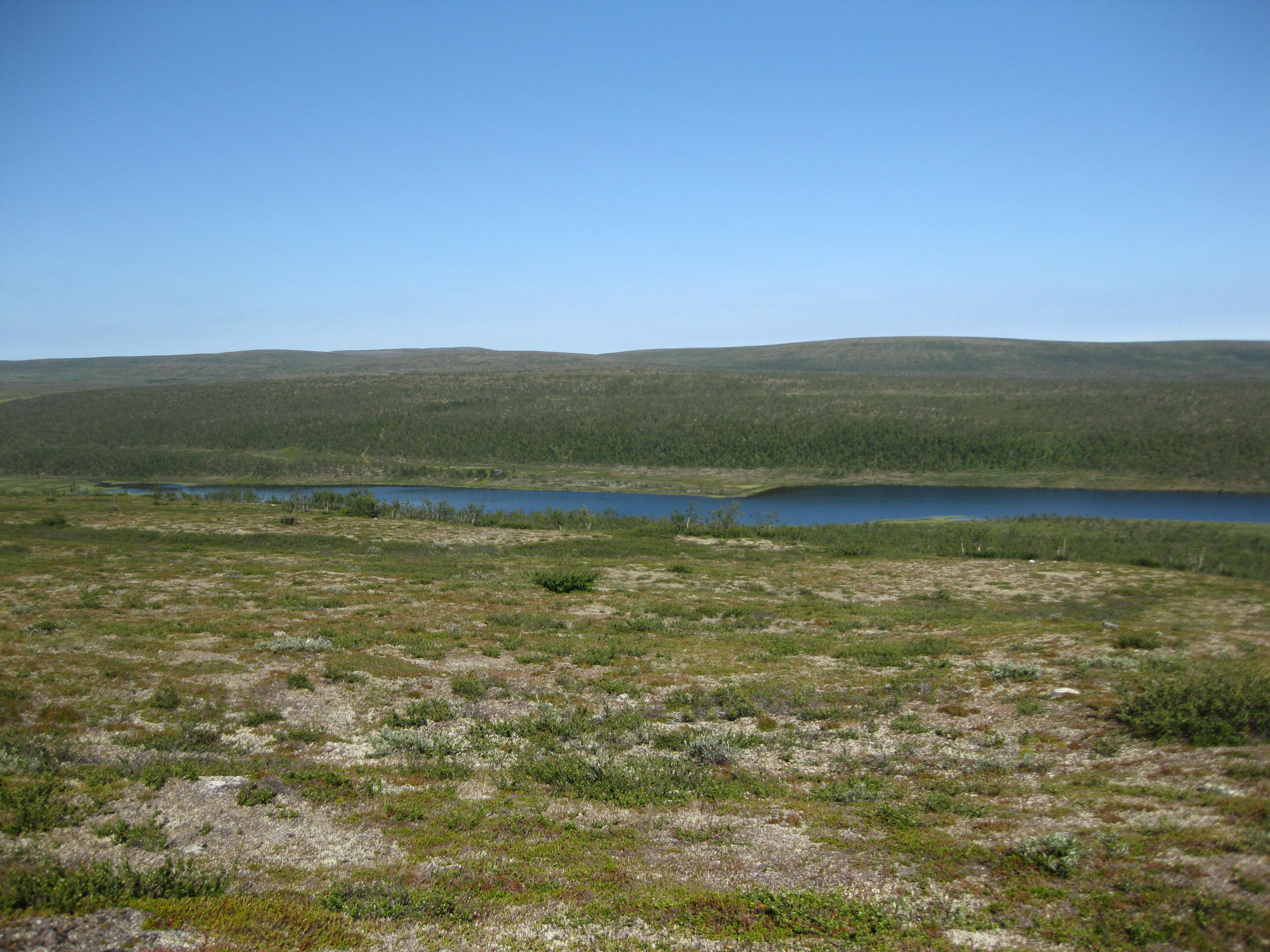
large
align-left
align-right
delete
There is much more that might be said. But what general conclusions can we draw from these stories about people, land, and lakes? Three answers.
Politically it is clear that Sámi practices are being squeezed by a powerful state. Yes, in principle Sámi have been recognized as an indigenous people in Norway since the end of the 1980s. Indeed, in some measure those principles have led to changes in practice. But only in some measure. So while in principle Sámi understandings of the environment are included in management schemes, in practice this happens poorly or not at all. Traditional ecological knowledge sits outside management, and more often than not it is in conflict with it. The harsh conclusion is that in important respects the situation in Sápmi is still colonial rather than postcolonial.
Practically it is clear that Sámi practices for living in and with land and water are being squeezed. Reindeer herding, salmon fishing in rivers, duck hunting, sea fishing, all are under continuing pressure. These pressures come from various sources. Conservation policies affect reindeer herding, hunting, and fishing. Increasing industrial and tourist demands for land are particularly harmful for reindeer herding and for Sámi people living off the land, sea, and lakes. And policies that enshrine urban understandings about nature as wilderness affect a wide range of Sámi practices including fishing and, once again, reindeer herding. Whether this cocktail of policies means that Norway is in breach of its international obligations to its indigenous people is a matter for discussion. But one thing is certain: the sustained squeeze on Sámi practices for caring for lakes and rivers and other actors in the environment is in the process of choking a form of ecological knowledge that has worked sustainably in a fragile environment for at least a millennium and probably for far longer. To put it gently, in present global circumstances this seems unwise.
And this leads us to our third point. This has to do with ontology. As we have tried to show above, Sámi fishing practices both are embedded in and help reproduce a web of respectful and reciprocal relations between lively actors.The same argument can be made for such other Sámi practices as reindeer herding, berry picking, bladder sedge cutting, duck and moose hunting, and salmon fishing. Those actors – lakes, the weather, the moon, a stone that is a sieidi – are powerful and they act in ways that can neither be entirely predicted nor controlled. They also come indifferently in a range of forms. Human, non-human, or super-human: distinctions between these are not of fundamental significance. What is important is rather the cautious process of maintaining respectful relations. It is only in this way that people can survive in a world filled with powerful actors such as these. This is what the blessings, offerings, and the forms of thanking are about: maintaining those relations. And the clearing of the lakes too. The conclusion is that in this world, facts and values are interwoven; it is a world filled with beings that are lively both physically and morally. And, as we earlier observed, this in turn means that for Sámi people binary distinctions between nature and culture make little sense.
In present Norwegian circumstances, it is not possible to bleach away the asymmetries in power between policy and Sámi traditional knowledge. But even if it were, there would still be a fundamental misunderstanding. This is because technoscience and policy treat with a world that is disenchanted. They assume that disenchantment, and every time they make a claim about the character of the world, they re-enact this and refuse the possibility of the physically and morally lively world of Sámi practice. This means that the misunderstanding is not – or not simply – epistemological, an argument about the best way of knowing reality. It is also ontological, about what there is in the world. In the realities of technoscience there is no space for the lively actors that inhabit the Sámi world. They are denied. They are not possible. The first and most important task is therefore simultaneously political, epistemological, and ontological. It is to cultivate practical ways of recognizing that these worlds are not the same. It is to acknowledge that land and water are actually different. That the Sámi world is indeed a lively world. Only when this has been achieved will it become possible to look for ways of getting on better together in difference.Helen Verran, “Engagements between disparate knowledge traditions: Toward doing difference generatively and in good faith,” in Lesley Green (ed.), Contested Ecologies: Dialogues in the South on Nature and Knowledge. Cape Town: HSRC Press, 2013, pp. 141‒61.
We are grateful to Inger Anne O. Hætta, Isak M. Hætta, and the many traditional knowledge holders who worked with the Árbediehtu (Heritage Knowledge) project. This paper draws on that project which is explored more fully in Liv Østmo, “Naturen som grunnlag for samisk kunnskap og identitet [Nature as the Foundation of Sámi Society and Identity],” in Eivind Falk and Dag Feldborg (eds), Leve kulturarven! Trondheim: Museumsforlaget, 2013, pp. 49‒58.
John is grateful to the Centre for Advanced Study in Oslo, Norway, which funded and hosted the research project “Arctic Domestication in the Era of the Anthropocene” during the academic year 2015/16. This paper was written with the support of the Centre and the Sámi Allaskuvla (Sámi University of Applied Sciences). We are also grateful to the knowledge holders Johan Henrik Buljo and Anders Persen Siri who have contributed with both their knowledge and wisdom on several occasions and in several projects.
If not indicated otherwise, the copyright holder of all pictures is Liv Østmo.